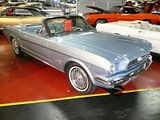
Another weekend, and another car museum. Yes, believe it or not, I managed to find another one in my vicinity. This time it is the Volo Auto Museum, in a very small little town called Volo, about 40 miles north west of Chicago, and only about 15 miles north of Schaumburg, Illinois, which is my current work location. It came to prominence a couple of years ago, as Volvo Cars tried to stop them from using the name, claiming that people would get confused, but the case died down pretty quickly. Although I have been to Schaumburg many times over the past few years, I’d never been to this museum before, and am now regretting this fact more than somewhat, for I found a veritable treasure trove of displays.
Unlike most museums, most of the cars on display here are actually for sale. This means that every visit will probably yield some different vehicles, so it will be worth returning periodically, and I certainly will do so. There are 4 halls of cars, a small military museum area, and some antique malls. Needless to say, I concentrated my efforts in the 4 halls, and took a huge number of photos. Categorising them, and writing some notes is a bit of a daunting task, but here goes…………..
Ford: Ford Mustang: one of the most popular American classics, with a huge survival rate of the early cars. Even now, I still reckon on seeing one almost every day when in the US. Affordable, and offered with a large range of options, there’s massive variety on offer:
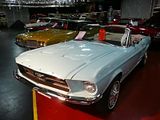

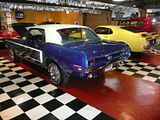




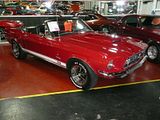
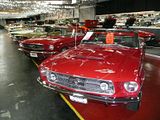
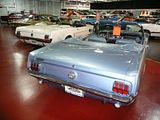
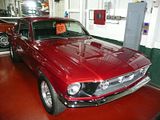
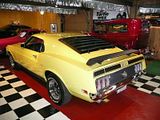
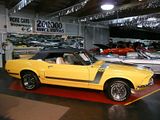
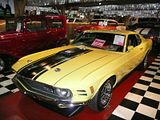


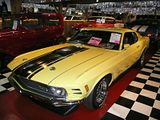
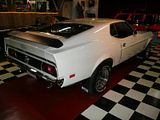
 One of the very rarest cars is this one, a genuine 67 Shelby Convertible. Only 2 were made, as prototypes, and Ford tried to get hold of both and destroy them, but somehow this one survived. It has been authenticated as genuine by Carrol Shelby himself. Estimates are that this particular car is now worth up to US$2m!
One of the very rarest cars is this one, a genuine 67 Shelby Convertible. Only 2 were made, as prototypes, and Ford tried to get hold of both and destroy them, but somehow this one survived. It has been authenticated as genuine by Carrol Shelby himself. Estimates are that this particular car is now worth up to US$2m!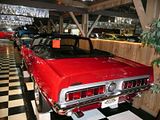 Ford Thunderbird: First launched in 1955, this was Ford’s riposte to the Corvette.
Ford Thunderbird: First launched in 1955, this was Ford’s riposte to the Corvette.
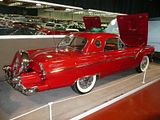 The second generation model moved even further away from the idea of a 2 seater sports car to a large tourer.
The second generation model moved even further away from the idea of a 2 seater sports car to a large tourer.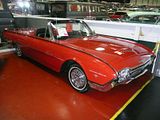 Ford Country Squire from 1956
Ford Country Squire from 1956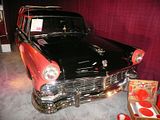 The mainstream models in the late 50s and early 60s were the Fairlanes. Convertibles were still popular, and Ford experimented with metal folding roofs, long before the current fad for incorporating them. Here’s a 59 convertible model
The mainstream models in the late 50s and early 60s were the Fairlanes. Convertibles were still popular, and Ford experimented with metal folding roofs, long before the current fad for incorporating them. Here’s a 59 convertible model The Ford Bronco first appeared in the mid 60s, and continued for more than 20 years before being axed.
The Ford Bronco first appeared in the mid 60s, and continued for more than 20 years before being axed. Mercury The Cougar was launched in 1967, and for the first couple of model generations, this was a distinct model in its own right, based off the Mustang platform, before the Ford Corporation decided to cut costs and twin it with the Thunderbird. This was one of the first models:
Mercury The Cougar was launched in 1967, and for the first couple of model generations, this was a distinct model in its own right, based off the Mustang platform, before the Ford Corporation decided to cut costs and twin it with the Thunderbird. This was one of the first models:
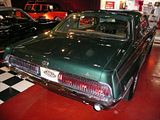 Chevrolet The ’57 models are widely regarded as the most desirable of all, and from the extensive range offered that year, it is the Bel Air models, which were top of the range that are particularly prized. None more so than the convertibles, of which there were several on show:
Chevrolet The ’57 models are widely regarded as the most desirable of all, and from the extensive range offered that year, it is the Bel Air models, which were top of the range that are particularly prized. None more so than the convertibles, of which there were several on show: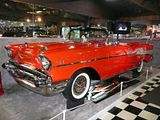
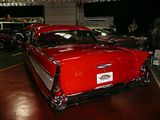
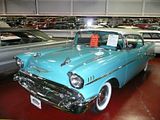

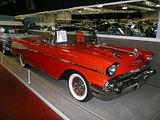
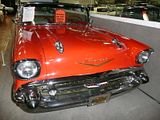 The 57s were an evolution of a model line that was first presented in 1955, and here are some Bel Air models from that year:
The 57s were an evolution of a model line that was first presented in 1955, and here are some Bel Air models from that year: After the relatively restrained lines of these cars, the trend for ever larger fins with ever more chrome was the real fashion. The zenith of this at Chevrolet was in the 1959 range, and here is an Impala from that year:
After the relatively restrained lines of these cars, the trend for ever larger fins with ever more chrome was the real fashion. The zenith of this at Chevrolet was in the 1959 range, and here is an Impala from that year: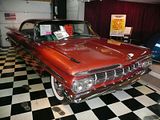
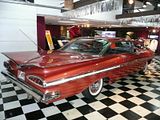
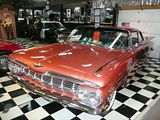 During the 60s, the excesses were toned down more than somewhat, as the clean lines of this 62 Impala exemplify:
During the 60s, the excesses were toned down more than somewhat, as the clean lines of this 62 Impala exemplify: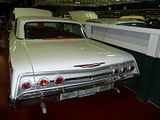 Of course, Chevrolet is also well known for the long running Corvette series. The early models, launched in 1953 were not a success. So much so, that Chevrolet apparently considered pulling the car from production.
Of course, Chevrolet is also well known for the long running Corvette series. The early models, launched in 1953 were not a success. So much so, that Chevrolet apparently considered pulling the car from production.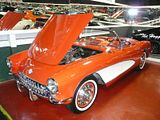
 Here are a few of the early C2 cars, dating from 1963 through to 1967:
Here are a few of the early C2 cars, dating from 1963 through to 1967: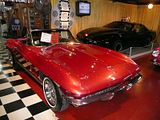
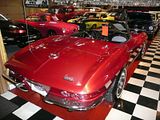
 This is from the very last of the C3 models, made in 1982, it was called the “Collectors Edition”, and featured special silver paintwork, and a rather brash silver leather interior:
This is from the very last of the C3 models, made in 1982, it was called the “Collectors Edition”, and featured special silver paintwork, and a rather brash silver leather interior: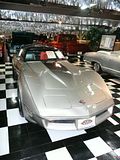
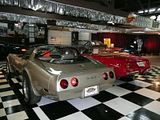 The success of the Mustang took GM by surprise, but it was not that long before they had their own alternative to offer. That car was the Camaro, launched for the 1967 model year, and which also was a huge success. There were a large number of the first generation models on display.
The success of the Mustang took GM by surprise, but it was not that long before they had their own alternative to offer. That car was the Camaro, launched for the 1967 model year, and which also was a huge success. There were a large number of the first generation models on display.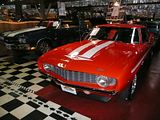
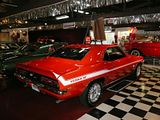
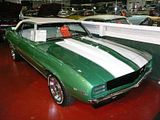
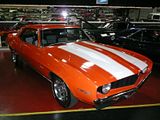
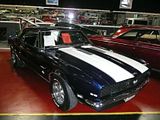
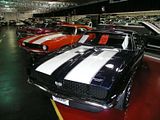
 This example is actually brand new. It’s a modern recreation of a 69 model. Don’t even ask the price!
This example is actually brand new. It’s a modern recreation of a 69 model. Don’t even ask the price!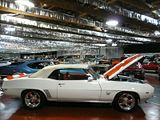
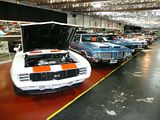 Slightly bigger than the Camaro was the Chevelle, and this was the car that Chevy selected for the “muscle car” treatment. Here is an SS from 1969:
Slightly bigger than the Camaro was the Chevelle, and this was the car that Chevy selected for the “muscle car” treatment. Here is an SS from 1969: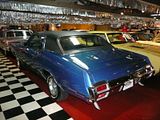 The Chevelle was the mid-size car from Chevy throughout the 60s, and was also popular as a convertible, such as this mid 60s model
The Chevelle was the mid-size car from Chevy throughout the 60s, and was also popular as a convertible, such as this mid 60s model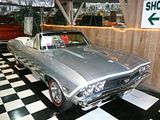
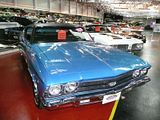 Even the pickups were given “the treatment”, as shown by the SS version of the El Camino, here
Even the pickups were given “the treatment”, as shown by the SS version of the El Camino, here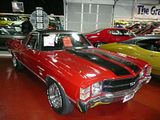 Pontiac: By 1950, the pre-war styling was long since gone, and a new style emerged. This Super Eight model shows the “new look” of the time
Pontiac: By 1950, the pre-war styling was long since gone, and a new style emerged. This Super Eight model shows the “new look” of the time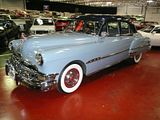
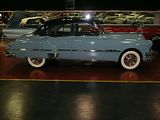
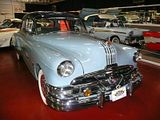
 Always presented as the sporty brand from the GM stable. The 62 Bonneville Convertible.
Always presented as the sporty brand from the GM stable. The 62 Bonneville Convertible.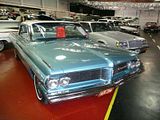
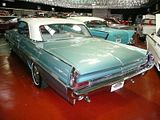 The GTO first appeared in the early 60s, and quickly achieved cult status. None more so than the 65 and 66 cars, like this one:
The GTO first appeared in the early 60s, and quickly achieved cult status. None more so than the 65 and 66 cars, like this one: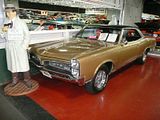 The first Firebird – easily the best looking, in my opinion – was a close relative of the Camaro, a trait that remained throughout the long life of both model names
The first Firebird – easily the best looking, in my opinion – was a close relative of the Camaro, a trait that remained throughout the long life of both model names
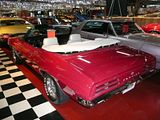
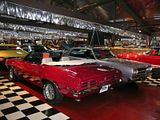 By the mid 70s, the Firebird was a rather large, and less exciting car. No amount of decals on the bonnet was going to disguise that fact:
By the mid 70s, the Firebird was a rather large, and less exciting car. No amount of decals on the bonnet was going to disguise that fact:

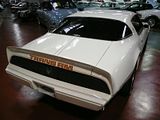
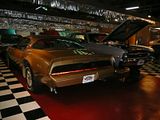
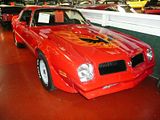 This is a 69 Le Mans Convertible:
This is a 69 Le Mans Convertible: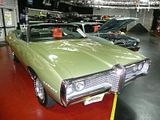
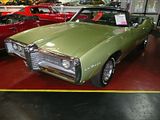
Oldsmobile The name may have died 4 years ago, but this was once a top selling brand, and for many years, it was an Oldsmobile that topped the US best seller list. The 1958 – unique styling for the one model year, and now seen as way over the top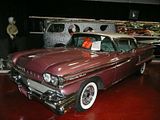
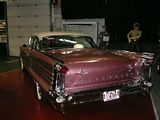
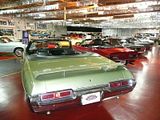
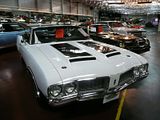 A Cutlass from about 1969:
A Cutlass from about 1969: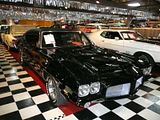 The 1970 model:
The 1970 model:


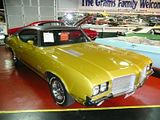 Cadillac Just one model on display……….. but what a car. Just look at the fins!
Cadillac Just one model on display……….. but what a car. Just look at the fins!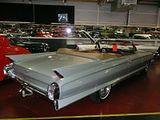
Buick Only a small number of these on show, too. This is a 1955 model Buick’s entry to the muscle car market was the GS445, sold between 68 and 71:
Buick’s entry to the muscle car market was the GS445, sold between 68 and 71: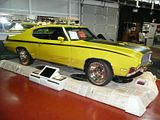
 Much to everyone’s surprise, Buick decided to spice up the rather stodgy Regal model in 1986 with a range of supercharged and turbo models, and these have become highly sought after
Much to everyone’s surprise, Buick decided to spice up the rather stodgy Regal model in 1986 with a range of supercharged and turbo models, and these have become highly sought after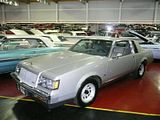
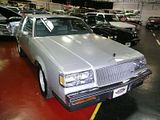
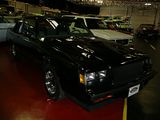 Plymouth The “budget” brand within the Chrysler family was not left out of the muscle car developments, taking ordinary family saloons, and planting every larger and more improbably engines into them. This was a fairly early attempt.
Plymouth The “budget” brand within the Chrysler family was not left out of the muscle car developments, taking ordinary family saloons, and planting every larger and more improbably engines into them. This was a fairly early attempt.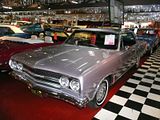
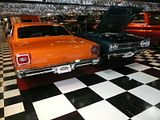 By the late 1960s, things had got more extreme
By the late 1960s, things had got more extreme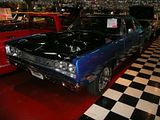 Dodge This was a Dart model from the early 60s.
Dodge This was a Dart model from the early 60s.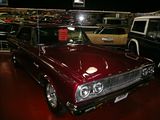 Chrysler Back in the mid 50s, the 300 Series was a desirable luxury car, and here are a couple of examples:
Chrysler Back in the mid 50s, the 300 Series was a desirable luxury car, and here are a couple of examples: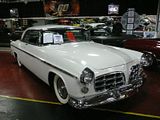 Studebaker By the early 60s, it was quite clear that this marque was fading. The 63 Avanti was a brave attempt to do something different. It did not save Studebaker, but it did live on, with modern recreations built til well into the 90s. This was an example of the original model
Studebaker By the early 60s, it was quite clear that this marque was fading. The 63 Avanti was a brave attempt to do something different. It did not save Studebaker, but it did live on, with modern recreations built til well into the 90s. This was an example of the original model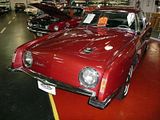 Hall 4 contained some of the older vehicles. As you’d expect, there was a predominance of Fords, Model “T” and Model “A”, but some surprises, as well: So, starting with the Model “T”, which came in all sorts of styles, including a conversion to a “sports” model :
Hall 4 contained some of the older vehicles. As you’d expect, there was a predominance of Fords, Model “T” and Model “A”, but some surprises, as well: So, starting with the Model “T”, which came in all sorts of styles, including a conversion to a “sports” model :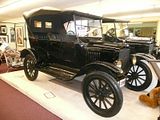
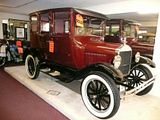
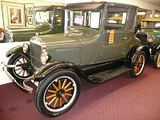
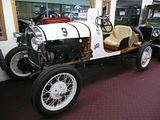
 And here are the Model “A”s:
And here are the Model “A”s: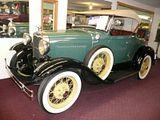 Following the success of the “A”, Ford headed upmarket, in a move that surprised many, with the first V8 models of 1934. The price tag of this one was very nearly $200,000, following a comprehensive restoration.
Following the success of the “A”, Ford headed upmarket, in a move that surprised many, with the first V8 models of 1934. The price tag of this one was very nearly $200,000, following a comprehensive restoration.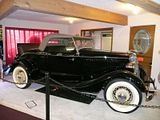
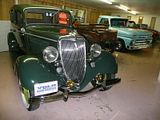 By 1940, car styling had advanced a long way from the Models “T” and “A”, as can be seen by this particular Ford:
By 1940, car styling had advanced a long way from the Models “T” and “A”, as can be seen by this particular Ford:
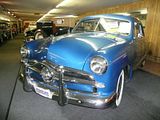 One of the earliest cars on show was this, a Minerva. This long forgotten Belgian marque was highly prestigious in its day.
One of the earliest cars on show was this, a Minerva. This long forgotten Belgian marque was highly prestigious in its day.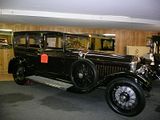 Another long forgotten marque, also known for the quality of its products, and the associated price premium was Packard. This Special model dates from 1939
Another long forgotten marque, also known for the quality of its products, and the associated price premium was Packard. This Special model dates from 1939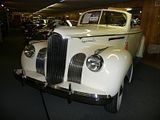 One of the last Packards made was the Caribbean, and this convertible from 1953 was beautifully presented
One of the last Packards made was the Caribbean, and this convertible from 1953 was beautifully presented This Studebaker President, from 1956, was the top of the range model, sold only in small quantities in comparison with the more prosaic offerings of the time:
This Studebaker President, from 1956, was the top of the range model, sold only in small quantities in comparison with the more prosaic offerings of the time: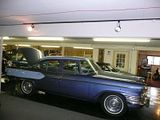
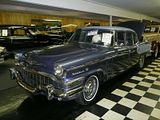 One of many other long-forgotten marques was this, the Fraser:
One of many other long-forgotten marques was this, the Fraser: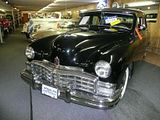 Another such is the Hudson. This is one of their later models, before they were finally subsumed by Nash which became Rambler, which became American Motors, which gave up making cars in the 1980s following an unsuccessful alliance with Renault.
Another such is the Hudson. This is one of their later models, before they were finally subsumed by Nash which became Rambler, which became American Motors, which gave up making cars in the 1980s following an unsuccessful alliance with Renault.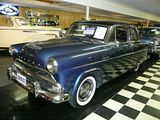 This 1930 car was described as an American Austin. Clearly based on the British Austin Seven, in in its day, it was notably smaller, and more dainty than anything else on US roads, and as such did not sell in large quantities
This 1930 car was described as an American Austin. Clearly based on the British Austin Seven, in in its day, it was notably smaller, and more dainty than anything else on US roads, and as such did not sell in large quantities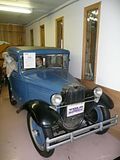 America did try again with small cars, and in the late 40s and early 50s, a small company called Crosley made some rather odd looking vehicles, such as this one.
America did try again with small cars, and in the late 40s and early 50s, a small company called Crosley made some rather odd looking vehicles, such as this one.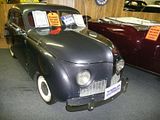 A couple of pick-ups were included in this part of the museum. First, a 1955 Chevy:
A couple of pick-ups were included in this part of the museum. First, a 1955 Chevy: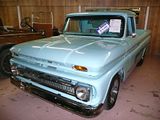 And more recently, an El Camino from the mid 70s:
And more recently, an El Camino from the mid 70s: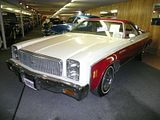 This 1953 Oldsmobile Holiday 88 was one of the first models to hint at the acres of chrome and over the top styling that were about to arrive, later in that decade.
This 1953 Oldsmobile Holiday 88 was one of the first models to hint at the acres of chrome and over the top styling that were about to arrive, later in that decade.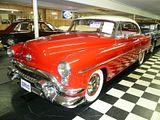 In among the older cars were a couple of 1980s Rolls Royces, an XJS Cabrio, and this, an original TR8:
In among the older cars were a couple of 1980s Rolls Royces, an XJS Cabrio, and this, an original TR8: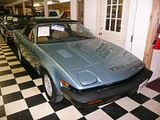 Another part of the museum contained some vehicles well known for their starring role in various movies.So, here they are: The original Batmobile:
Another part of the museum contained some vehicles well known for their starring role in various movies.So, here they are: The original Batmobile: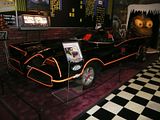 From Ghostbusters, a 59 Cadillac, chosen, so they said, because of its wacky appearance
From Ghostbusters, a 59 Cadillac, chosen, so they said, because of its wacky appearance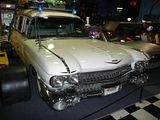 Back to the Future:
Back to the Future: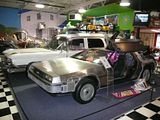
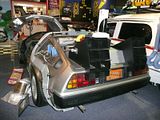 Scooby Do:
Scooby Do: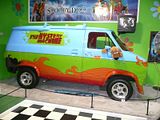 Yet more examples of Herbie. Has every museum got a few of these? It certainly seems so!
Yet more examples of Herbie. Has every museum got a few of these? It certainly seems so!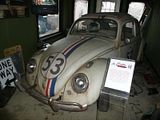
 The Dukes of Hazard:
The Dukes of Hazard: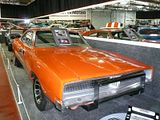 Well worth a visit if you are in the Chicago/Great Lakes area. More details at: http://www.volocars.com
Well worth a visit if you are in the Chicago/Great Lakes area. More details at: http://www.volocars.com
2010-01-03 09:39:38






































































































































